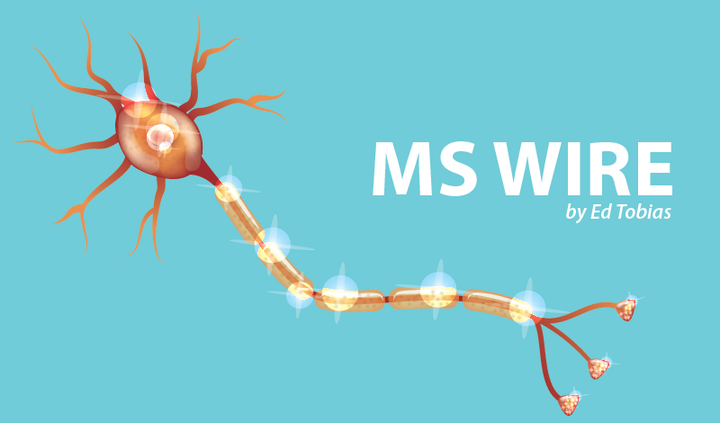MS News that Caught My Eye Last Week: New Lemtrada Side Effect, MS Cooling Vests, and Drug Infection Risks


Acute Acalculous Cholecystitis Linked to Lemtrada Use in RRMS Patients, FDA Reports
The makers of Lemtrada have added the possibility of another serious side effect to the warning carried on the therapy’s label. The addition follows a Food and Drug Administration review that discovered a potentially serious gallbladder disease that affected eight MS patients might be linked to their Lemtrada treatments.
Acute acalculous cholecystitis (AAC) is a rare but potentially life-threatening adverse effect linked to treatment with Lemtrada (alemtuzumab) in patients with relapsing-remitting multiple sclerosis (RRMS), according to a U.S. Food and Drug Administration review.
The study, “Acute acalculous cholecystitis — A new safety risk for patients with MS treated with alemtuzumab,” was published in the journal Neurology.
***
MS Foundation Partnering with ThermApparel to Provide Cooling Vests to Patients
Summer’s coming in the Northern Hemisphere, and that means heat. What better time for a program to help MS patients who need to beat the heat but can’t afford to buy a cooling garment?
The MS Focus: Multiple Sclerosis Foundation will be accepting applications through June for its Cooling Program, which provides cooling garments to multiple sclerosis patients whose condition has left them heat-sensitive.
Although 60 to 80 percent of patients are heat-sensitive, there were no MS-specific cooling garments on the U.S. market until ThermApparel was born. The foundation is partnering with the company on the Cooling Program initiative, which is for patients on limited incomes.
***
First Generation Disease-modifying Therapies Pose Low Infection Risk in MS, Study Finds
This relatively long-term study confirms pretty much what I would expect: Using an older MS medication, such as Avonex, Betaseron, or Copaxone, carries less of a risk of contracting an infection than using a newer therapy, such as Tysabri. Not studied by these researchers, however, is the effectiveness of the older Phase I therapies compared to Phase II. And I think that comparison is an important part of the process when a patient and a doctor decide on a treatment course.
A large group study showed that first-generation disease-modifying therapies (DMTs) do not increase the infection risk in multiple sclerosis (MS) patients.
Many of the DMTs used to reduce the risk of relapse in MS target the immune system and cause a suppression of the inflammatory response. Although helpful in treating the disease, these therapies may also increase the risk of developing subsequent infections.
***
Note: Multiple Sclerosis News Today is strictly a news and information website about the disease. It does not provide medical advice, diagnosis, or treatment. This content is not intended to be a substitute for professional medical advice, diagnosis, or treatment. Always seek the advice of your physician or other qualified health provider with any questions you may have regarding a medical condition. Never disregard professional medical advice or delay in seeking it because of something you have read on this website. The opinions expressed in this column are not those of Multiple Sclerosis News Today, or its parent company, Bionews Services, and are intended to spark discussion about issues pertaining to multiple sclerosis.







John Auriemma D.O.
That news about lower infection risk with first generation DMT's makes sense. Because the first generation DMTs were steroids that would decrease the effectiveness of our white cells whereas Tysabri, is a med that tags our white cells making them incapable of crossing the Blood Brain Barrier (BBB) hence, the reason for the MS deaths caused by
Polymorpholuecocytosis (PML's).
Copaxone, is a medication we're still uncertain about it's total Mechanisms of action . It either teaches our white blood cells not to attack self or somehow forms a barrier protecting self from the white cells. Either way, it is one of the better MS drugs, right up there with tysabri.
Ed Tobias
Well put, John. Thanks for taking the time to provide that perspective.
Ed
Teresa
After 30 years with m.s.and using various DMTs over the years, Avonex which I have mostly used, has ceased to become effective. Surprising to me, my doctor recommended Copaxone and not one of the newer DMT’s.
After 1 year of using the drug, I have leveled off at my current disability.
Deborah Gostin
Really nice to hear. No need to get into something else that may have bad side effects. I have enjoyed Copaxone for many years, as indicated in my own post.
Deborah Gostin
I started out with Betaseron, and then tried Avonex because one neuro thought I should at least try it after testing showed I had developed "neutralizing antibodies." I always felt that was an odd recommendation but went ahead with it until I met another neuro who felt exactly the same way as I did (as well as most other neurologists). I had kept having exacerbations with both before I began Copaxone mid 1999. My attacks really slowed down to almost none, and I have been with it ever since. The greatest decline for me has been cognitive, but I also live with pronounced depression and anxiety. Otherwise, my difficulty with heat, sensitivity to certain sounds, and other sensory issues remain, as does my fatigue, but I really cannot complain. Nothing is really broken and nothing more to really fix. I am 58 and was diagnosed in 1990, and am fully mobile.